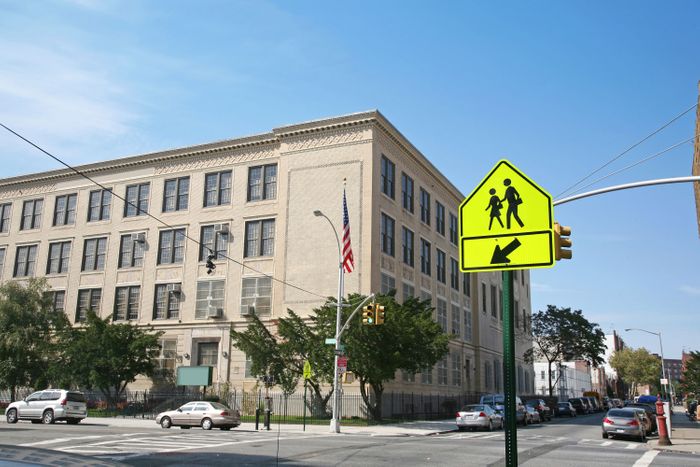
“My feet are starting to freeze,” a Brooklyn public-school teacher tweeted on December 9, when she had two classroom windows open despite the temperature outdoors dropping to 31 degrees. Despite the weather getting colder, she said teachers in her building have been told to keep the windows open indefinitely. It’s the same in schools across the city, where scores of NYC elementary teachers and students are bundled up in frigid classrooms to prevent the spread of the coronavirus.
Is this the best that New York City schools can offer? Until the city upgrades hundreds of New York City school buildings, the short answer is yes. Ventilation systems in the buildings built in the early 1900s “basically rely entirely on open windows, like the whole one wall of a classroom is just all windows,” said Edward Olmsted, an industrial hygienist, whose job it is to make sure that an indoor space has good air quality with no mold or other contaminants. Olmsted serves as a consultant for the United Federation of Teachers (UFT) and has been working on fixing school ventilation issues since the summer. A lot of these prewar school buildings built during the Spanish flu pandemic were designed to keep airborne illnesses at bay with steam radiators overheating rooms and the windows always open — but a century later, that doesn’t always work in practice. The city’s Department of Education also issued new guidance that when the room temperatures are uncomfortably cold, custodians should raise boiler settings and preheat the building — but this still leaves teachers and students shivering in class.
Newer school buildings have better ventilations systems, but the problem is that schools — old or new — now need the kinds of systems found in hospitals. “Nobody builds a regular building that way, so suddenly everybody is being asked to upgrade their ventilation systems, to really perform like it would in a hospital,” Olmsted said. “[But] you can’t just easily make a few changes, turn a few screws, or change a couple pieces or parts, and suddenly it’s a hospital system; it can’t be done.” A typical fan system’s filter is rated MERV 8, while hospitals usually have MERV 15 or 16 filters (the higher the MERV numbers, the smaller the dust particles it can filter out). Experts are now recommending MERV 13 filters, which remove about 90 percent of the aerosol that could carry infectious virus particles.
The DOE is now installing thousands of MERV 13 filters, prioritizing buildings with a central HVAC system or no windows. The agency is also installing 30,000 High Efficiency Particulate Air or HEPA purifier units in classrooms, which capture over 99 percent of particles in the air. Once these purifiers are installed, classroom windows don’t need to remain open, said a DOE spokesperson. The agency expects to deliver an additional 30,000 purifiers by January, according to an internal memo sent to DOE custodians. Once the 60,000 units are installed, this should cover most of the classrooms that need it, said the department.
But some parents are skeptical. “I am not confident that those air purifiers will be enough to circulate the air. I am not confident that if they do show up, they will be working,” Naomi Peña, director of the Community Education Council for District 1 and public-school mom, told me. She may have a point. According to the EPA, both filters and air purifiers are effective at filtering out coronavirus particles, but by themselves are not enough — they should be used in conjunction with mask-wearing, social distancing, and other common safety practices — like opening windows.
Though Peña’s children are studying remotely, they see their classmates at the school via Zoom. Her 11-year old son was puzzled to see one of his friends wearing a coat inside the classroom and asked her, “Why can’t he just come over to our house so he can be warm?” And he has a point, Peña says. “When it’s cold and you’re wearing gloves and a coat … How can you possibly learn?”




